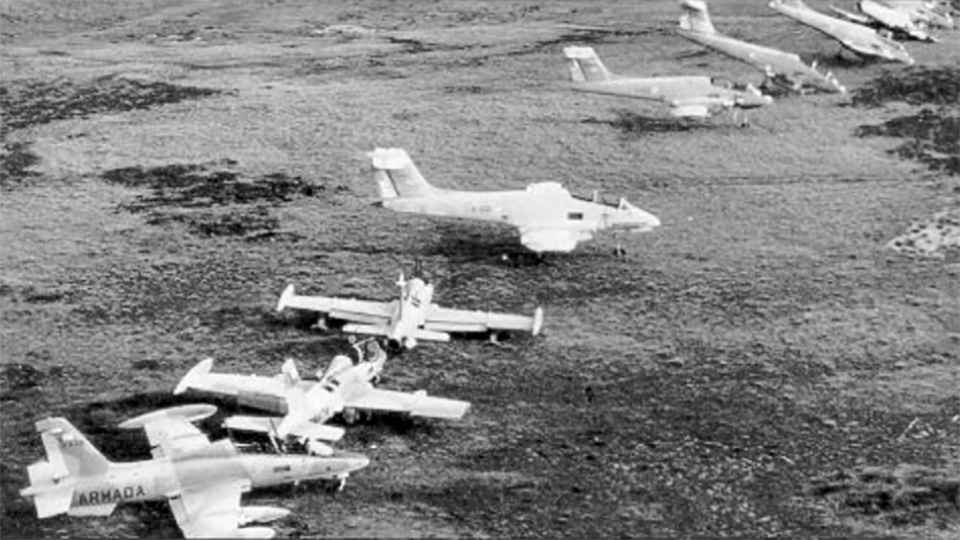carvalho2008
Naval alternative projects
- Joined
- 20 November 2015
- Messages
- 452
- Reaction score
- 500
in another alternative what if... why not LTV A-7 Corsair II? they had excellent range...MTOW....
That's 3750L, a pair of 2000L tanks give you an extra 250L to work with.2x 1,700L tanks should be enough, ideally with a 350L gunbay tank (as that adds no drag).
Certainly. That said the AS-30 CEP was still advertised as 10m, meaning 50% chance of hitting a target within that radius. Against a small land target like a bunker that might have been problematic but against a ship it should have been fine.MCLOS and LG AS-30s were extremely differents in brute efficiency
Hi ScottDid they make ~2000L tanks for the Mirage/Dagger (and could they carry that much weight on the pylons)?
If so, that would give the Mirage/Daggers space for an AS30 on the centerline with a little more fuel than 3x1300L tanks.
Thank you!Hi Scott
the biggest tank for the M-III / M-V (Dagger) was the 1700lts.
I think the 2000 lts are for the M-2000.
The F-1 have the 1300lts and the big central pylon tank ( i dont remember the capacity)
Interesting. Would be nice to have more details… I suspect the Mirage 5Ps’ equipment was not as suitable as Etendard IVMs for sea-skimming attacks (though on paper they were very similar) or the pilots not using the right techniques.The FAA had previously evaluated the Nord AS.30 when it purchased Canberras. One of the Aerospacio magazine articles shared that the FAA tested the command guided AS.30 in live-fire exercises after the war on the ex-Peruvian Mirage 5 against ground & simulated naval target on a bombing range. The results were very poor. What's more survivable: 1.) Trying to manually guide a missile in terrible South Atlantic weather, at high speed and a predictable flight path deep within the Sea Dart envelope while also scanning the sky for enemy CAP, all while trying to not hit the deck, or 2.) One pass & haul ass.
This discussion is really about the best way to conduct open water attacks prior to San Carlos, to force the task force to stand off and thus prevent the landings from happening.You'd still need a terminal pop up into the Sea Dart WEZ to ensure the weapon doesn't smack into the water and then guide the thing. Not to mention, Argentine pilots made extensive use of terrain masking when available to expose themselves as briefly as possible
Interesting. Would be nice to have more details… I suspect the Mirage 5Ps’ equipment was not as suitable as Etendard IVMs for sea-skimming attacks (though on paper they were very similar) or the pilots not using the right techniques.
In theory this is how a low altitude anti-ship attack should work. It should not be that different from a bombing run:
- Fly in under the Sea Dart envelope, using the radio-altimeter’s low altitude mode to maintain 50-100ft (The Etendard IVM has green/red/yellow lights to help maintain a preset altitude).
- Target detection in open water at 15-20nm using the Aida radar. It counts down range and triggers an in-range sound cue around 9-12km.
- The missile pops up after launch so the pilot can fire the missile and maintain course straight, fast and low level (even down to 50-100ft) as if on a bombing run.
- The hard part is guiding the missile with the right hand during the ~20s flight, while keeping an eye on the radio-altimeter warning lights and giving small altitude control inputs with the left hand. The AS-30 is very stable and flies straight like a rocket so the amount of guidance adjustments shouldn’t be huge
- The missile will hit while still 3-4km from the target, allowing the pilot to break and maintain a stand-off range of 2km+
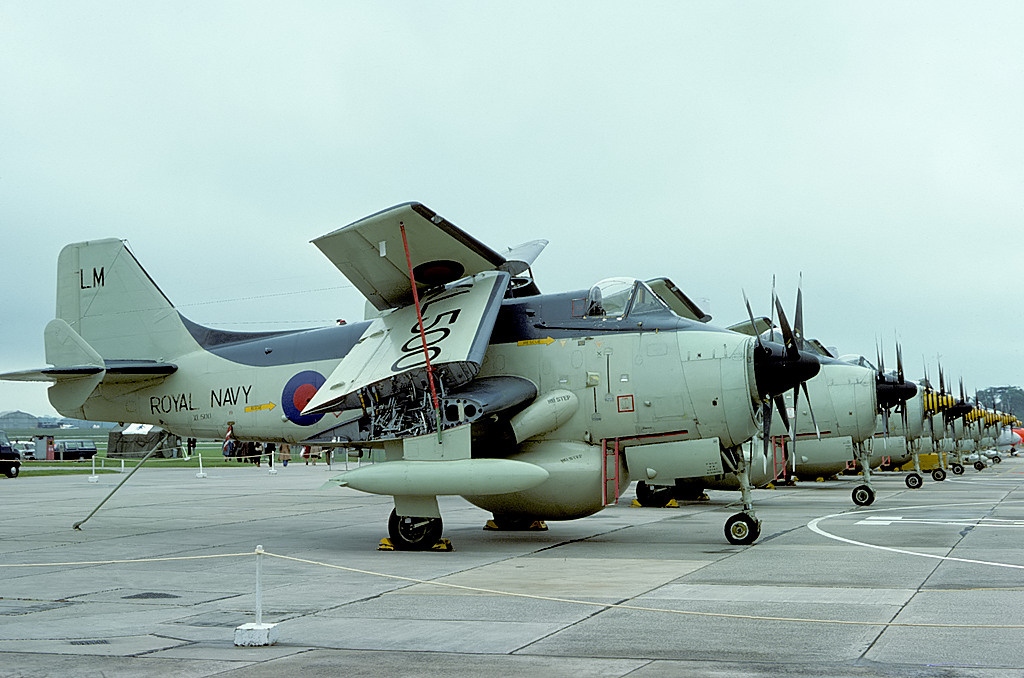
The sole operational Gannet squadron, 849 NAS had over the course of its time operating the aircraft a total of four operational flights plus the HQ flight. The HQ flight was stationed at three Fleet Air Arm air stations over the period of Gannet operation, while the majority of the operational flights were assigned to more than one aircraft carrier over the course of the Fleet Air Arm's use of the aircraft, with five RN carriers operating Gannet AEW flights.
HQ Flight – RNAS Culdrose (1960–1965); RNAS Brawdy (1965–1970); RNAS Lossiemouth (1970–1978)
A Flight – HMS Ark Royal (1960); HMS Centaur (1961–1963); HMS Victorious (1963–1967); HMS Hermes (1968–1970)
B Flight – HMS Victorious (1960–1962); HMS Hermes (1962–1967); HMS Ark Royal (1970–1978)
C Flight – HMS Hermes (1960–1962); HMS Ark Royal (1962–1966)
D Flight – HMS Eagle (1964–1971)
I will die on that hill until my last breath (d'uh)... The RN most infuriating missed opportunity was the Gannet AEW.3. Even more with HMS Hermes in the fight. But the catapults were gone, and the ski jump stood in the way.

Fairey Gannet AEW.3 - Wikipedia
en.wikipedia.org
So - 44 were build. Last retired December 15, 1978. I would really like to set the record straight about a few elements
- when and where were the Gannet AEW.3 scrapped, from 1979 ?
- did they looked whether a few of them had survived, by April 1982 ?
- was there a plan to operate the from HMS Hermes, whatever the risk and limits ?
The claimed success rate of 50% was not perfect but much better than bombs.
I don’t think LGBs are viable as they need to be launched from altitude which puts the launch aircraft squarely in Sea Dart’s engagement enveloppe. Hence the need for a missile that can be launched at low altitude and be available in more numbers than Exocet…Ok, so we've warmed somewhat to the potential of AS.30's... What's the scope for Argentina gaining access to laser guided bombs (LGB's), to give stand off range and accuracy.
True for the Pave Spike system if an aircraft was being used as the designator. The other problem in the Falklands would be the weather. Can the designator see the target to guide the bomb? Could the available aircraft carry both the designator pod and the lgb?I don’t think LGBs are viable as they need to be launched from altitude which puts the launch aircraft squarely in Sea Dart’s engagement enveloppe. Hence the need for a missile that can be launched at low altitude and be available in more numbers than Exocet…

 www.britmodeller.com
www.britmodeller.com
This would have offered an interesting ground attack capability, particularly for being based in Port Stanley.Crap, was the Skyraider the ideal attack aircraft for Argentina in '82 ?
What is your source ?and a Skyraider pilot, manoeuvering intelligently and close to the ground, kicked the ass of a Vautour jet bomber over Algeria, in 1961... in a friendly DACT exercise, obviously.
The Spads also shot down some enemy fighters in Vietnam: two MiG-17.Skyraider never dies !
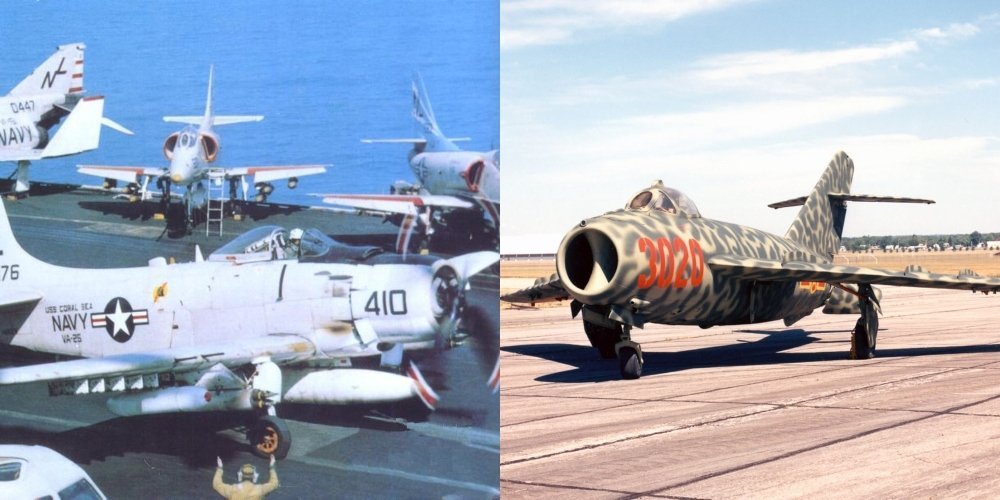
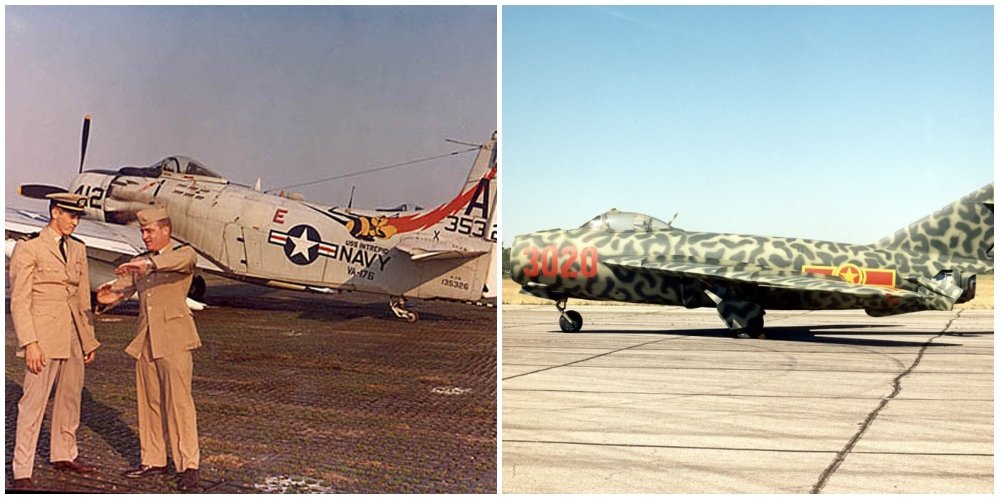
What is your source ?
Crap, was the Skyraider the ideal attack aircraft for Argentina in '82 ?
The Navy wanted the Spad in 1956, but at that time the priority was the Frencha, so USA offer the the Corsair and accepted the F4U-5 (12) and then the F4U5NL
In theory this is how a low altitude anti-ship attack should work. It should not be that different from a bombing run:
- Fly in under the Sea Dart envelope, using the radio-altimeter’s low altitude mode to maintain 50-100ft (The Etendard IVM has green/red/yellow lights to help maintain a preset altitude).
- Target detection in open water at 15-20nm using the Aida radar. It counts down range and triggers an in-range sound cue around 9-12km.
- The missile pops up after launch so the pilot can fire the missile and maintain course straight, fast and low level (even down to 50-100ft) as if on a bombing run.
- The hard part is guiding the missile with the right hand during the ~20s flight, while keeping an eye on the radio-altimeter warning lights and giving small altitude control inputs with the left hand. The AS-30 is very stable and flies straight like a rocket so the amount of guidance adjustments shouldn’t be huge
- The missile will hit while still 3-4km from the target, allowing the pilot to break and maintain a stand-off range of 2km+
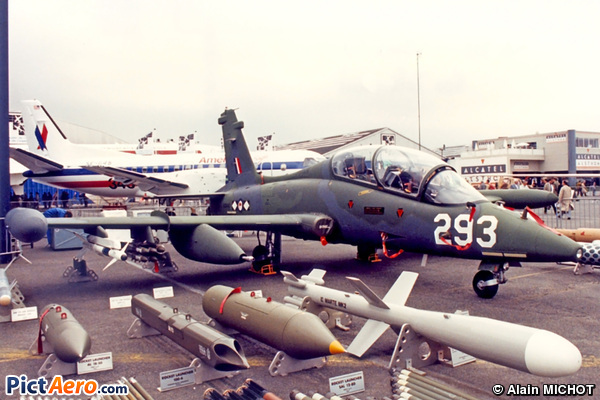
the mb-326 or mb-339 are often questioned as a weapon of attack, but the truth is that those who used it, used it very well with South Africans and Brazilians and not just these. Although some time after the Malvinas, Aermacchi believed enough to launch an MB-339K Veltro version capable of launching anti-ship missiles Marte MK II. Why is this information relevant? It is relevant because despite the technological package released years later, the aircraft itself had the same flight envelope as the first versions and the MB-326.
Therefore, it was the cheapest fighter, within the Argentine reality, possible to exist in large quantities surviving the loss rates of that conflict, and which could operate on the islands. These qualities of this product, although inferior, allowed a correction of primary errors in the middle of conflict. Had they actually been there as the main body, they would have been able to alter the battle, incredible as it may seem.
What kind of radar were they planning to use for target designation?Aermacchi believed enough to launch an MB-339K Veltro version capable of launching anti-ship missiles Marte MK II
Yes, which is exactly why I explained earlier in this thread that the choice for Port Stanley had to be for quality over quantity - ie. the best fighter-bomber that could operate from the short runway in limited numbers (6-8 max) and tough conditions.One of the problems faced was parking space, which had to be improvised for them given that the apron area had to be reserved for the heavy transport aircraft coming and going.
